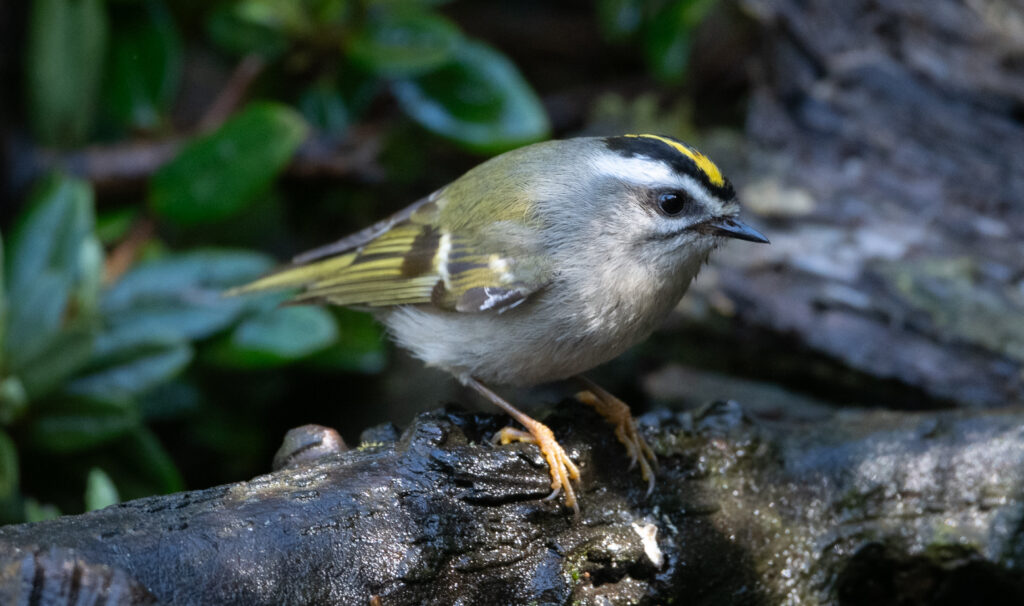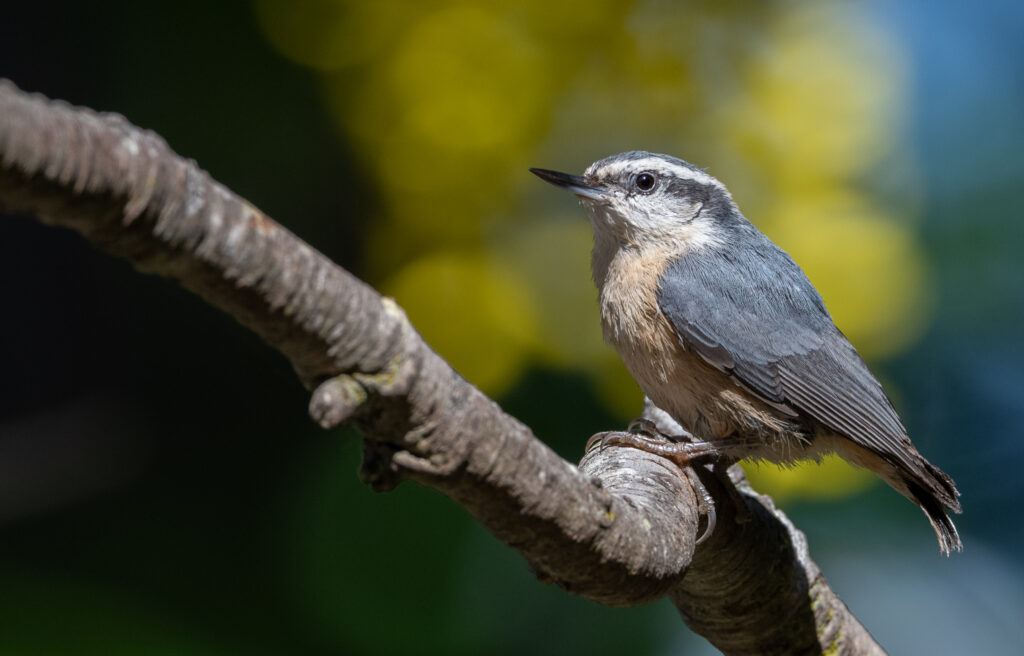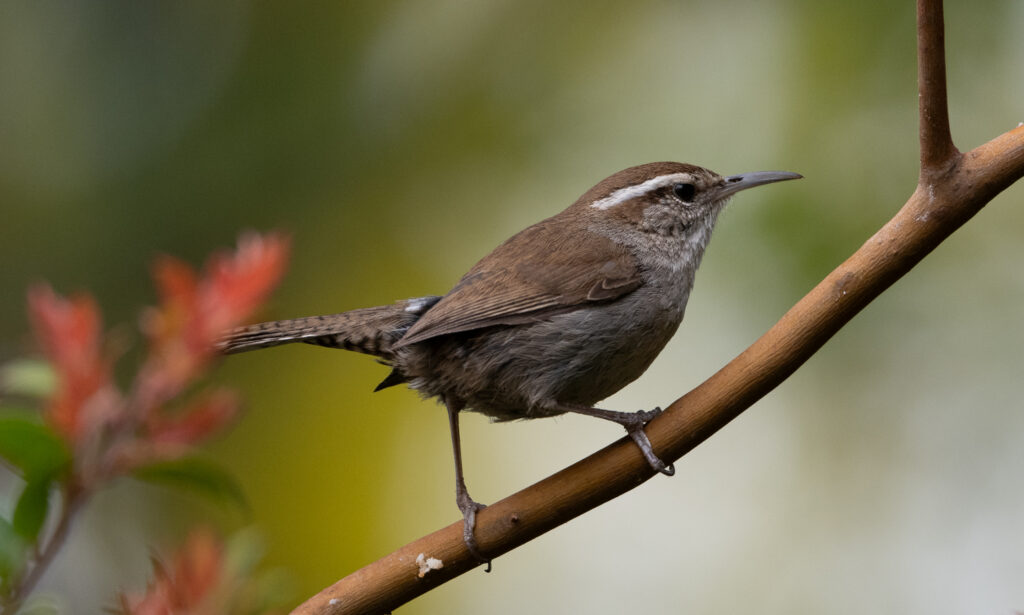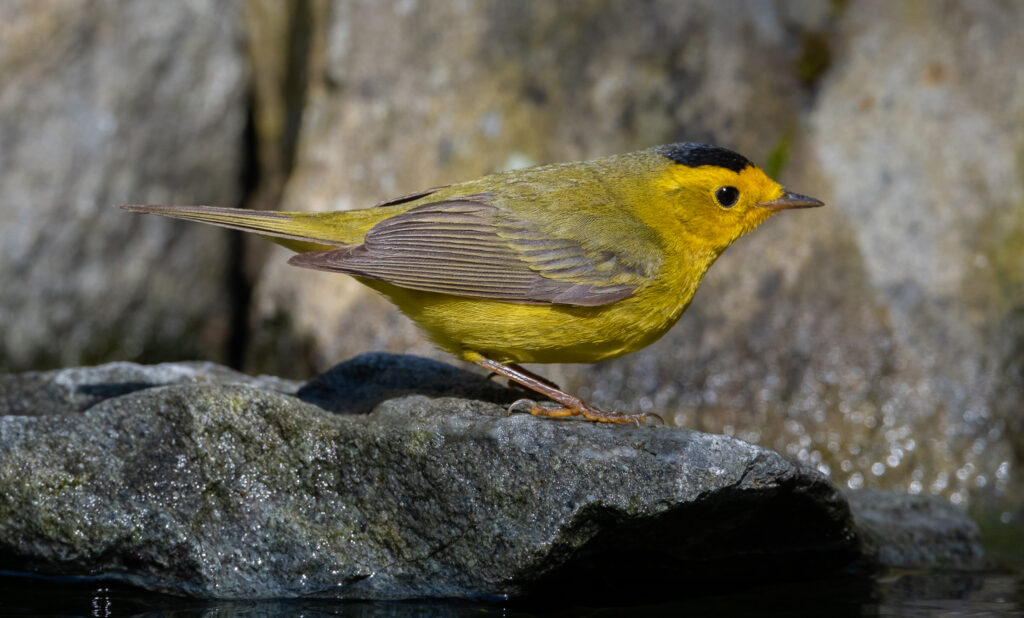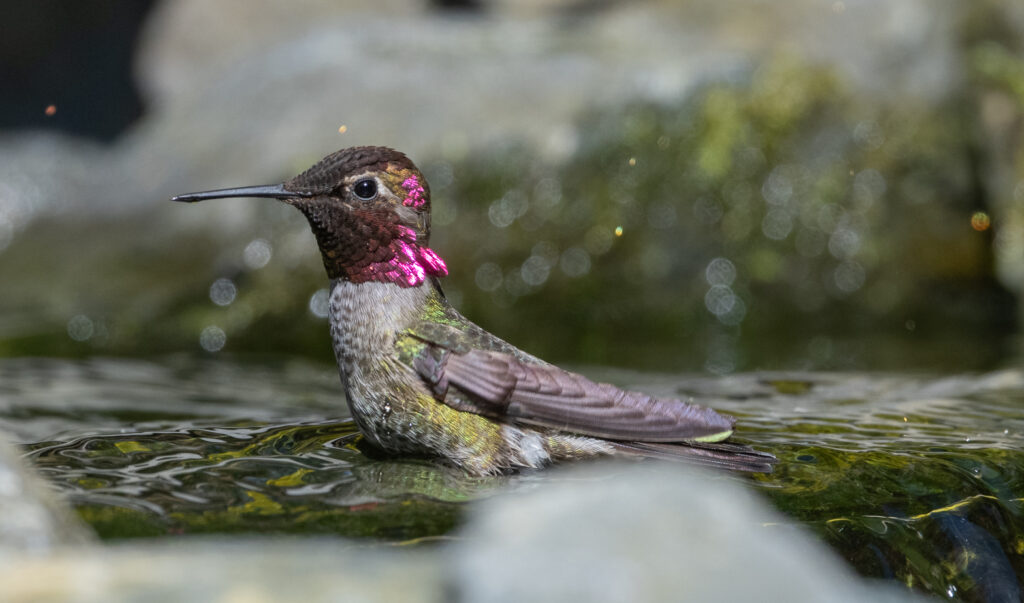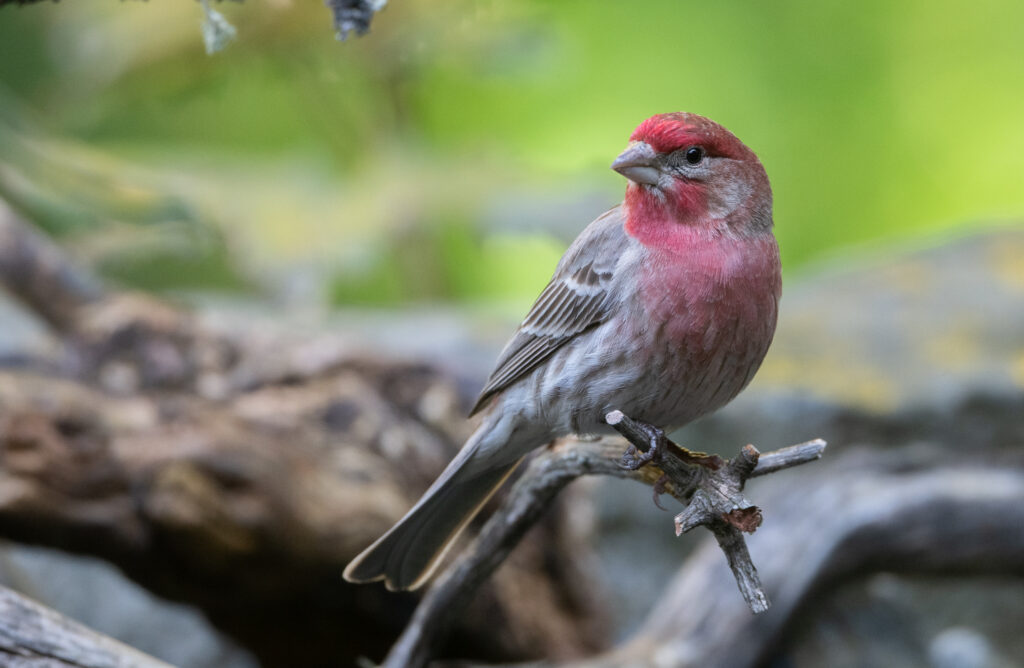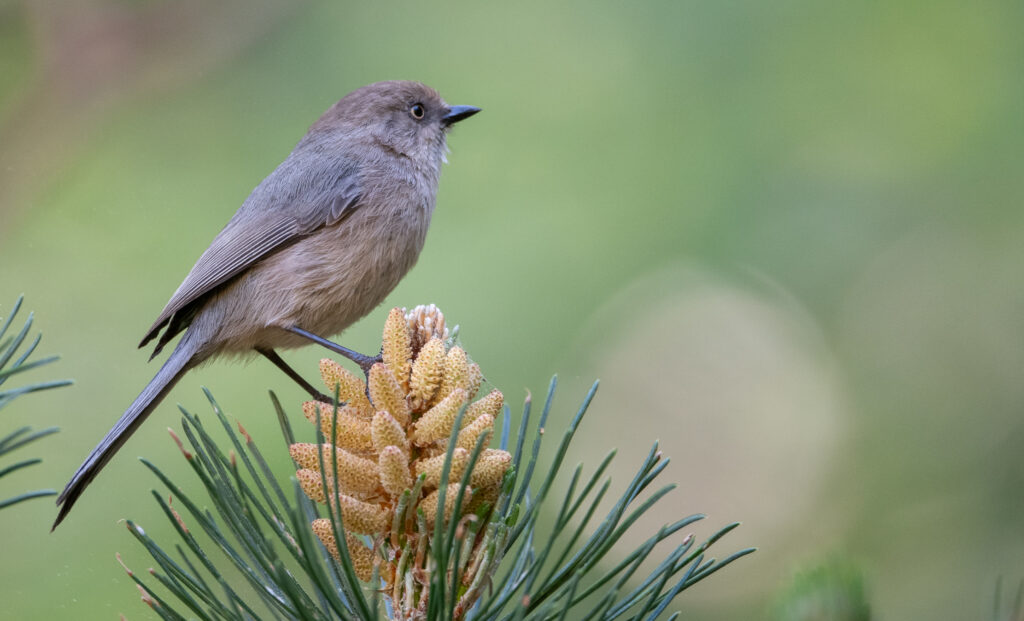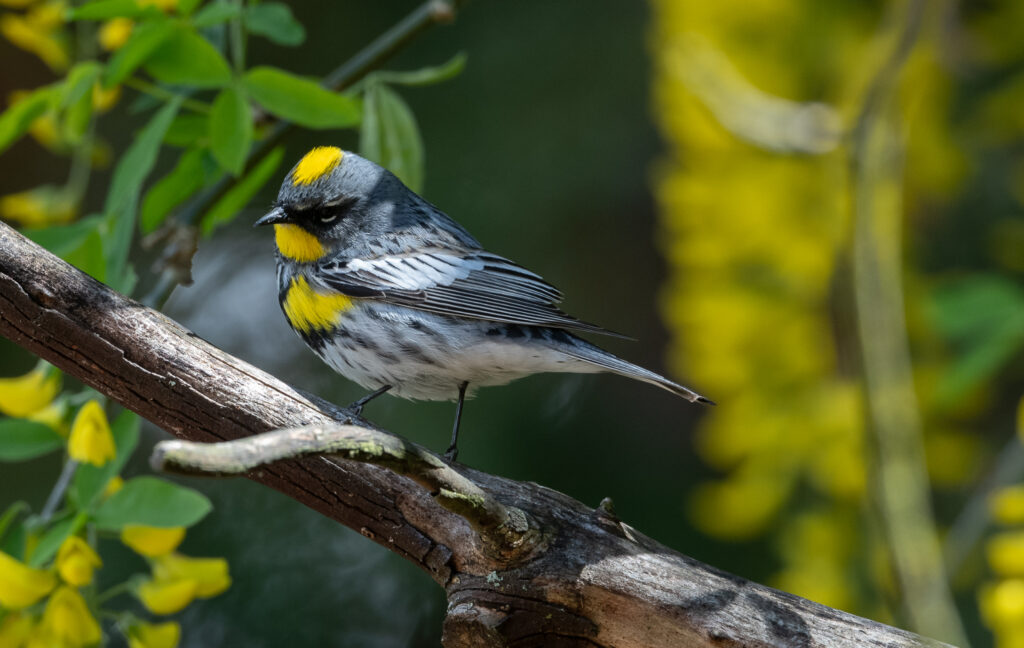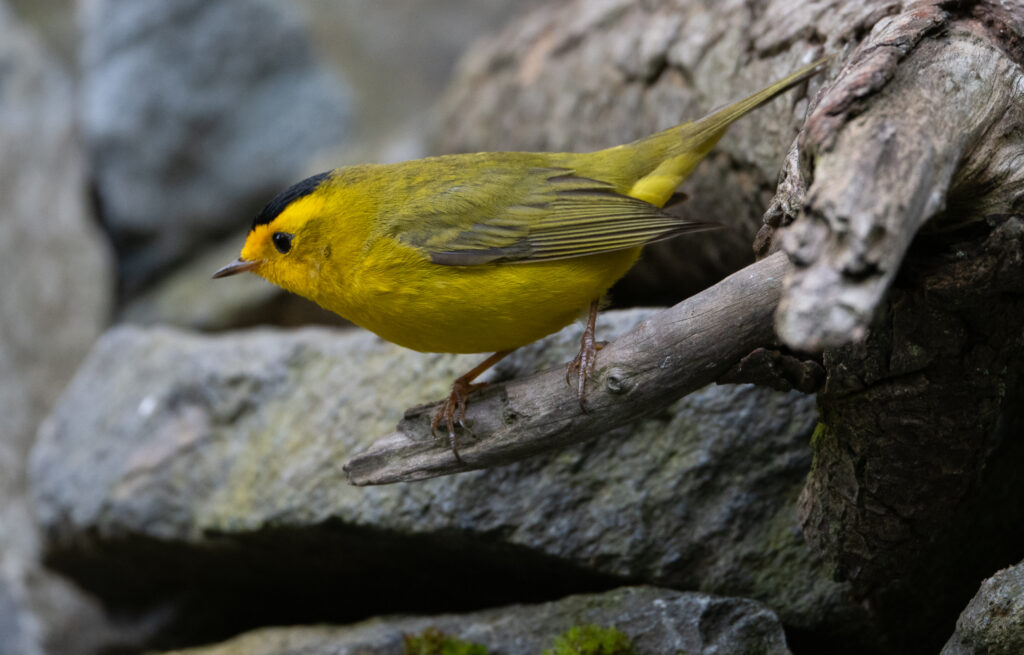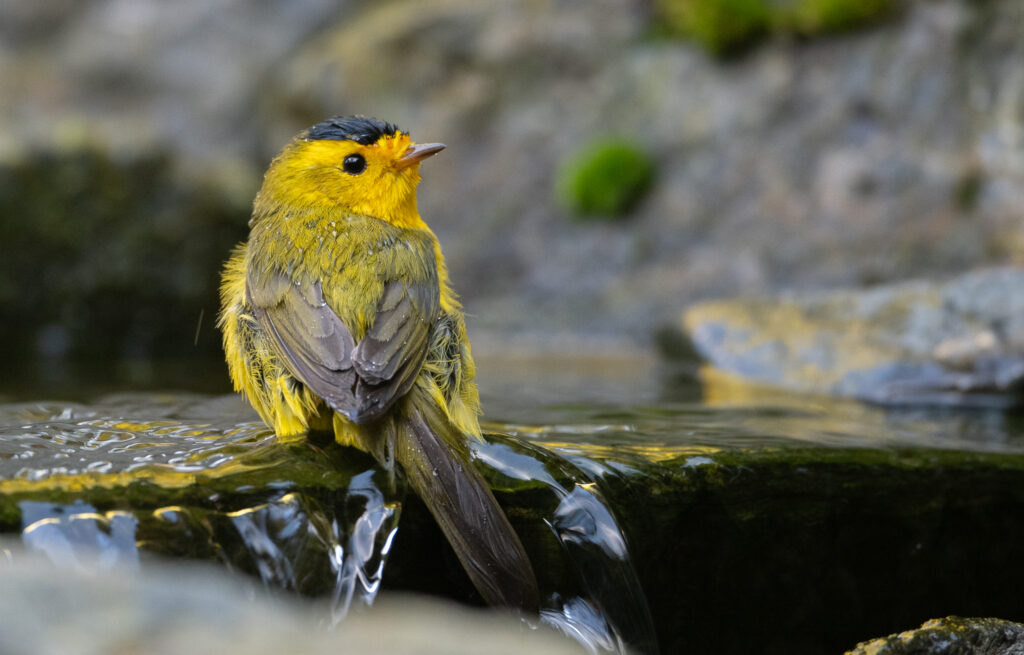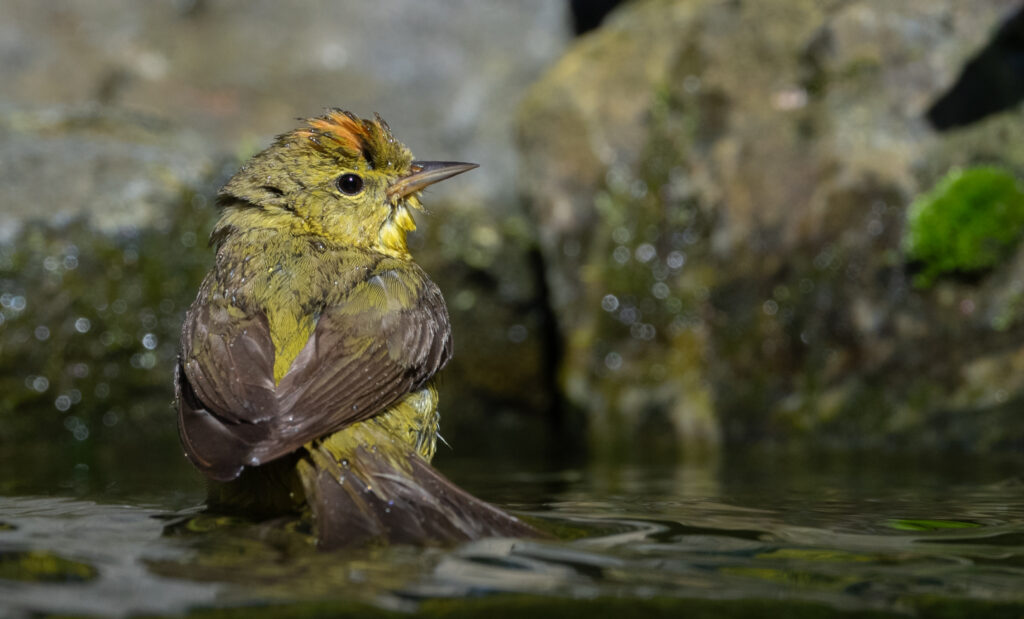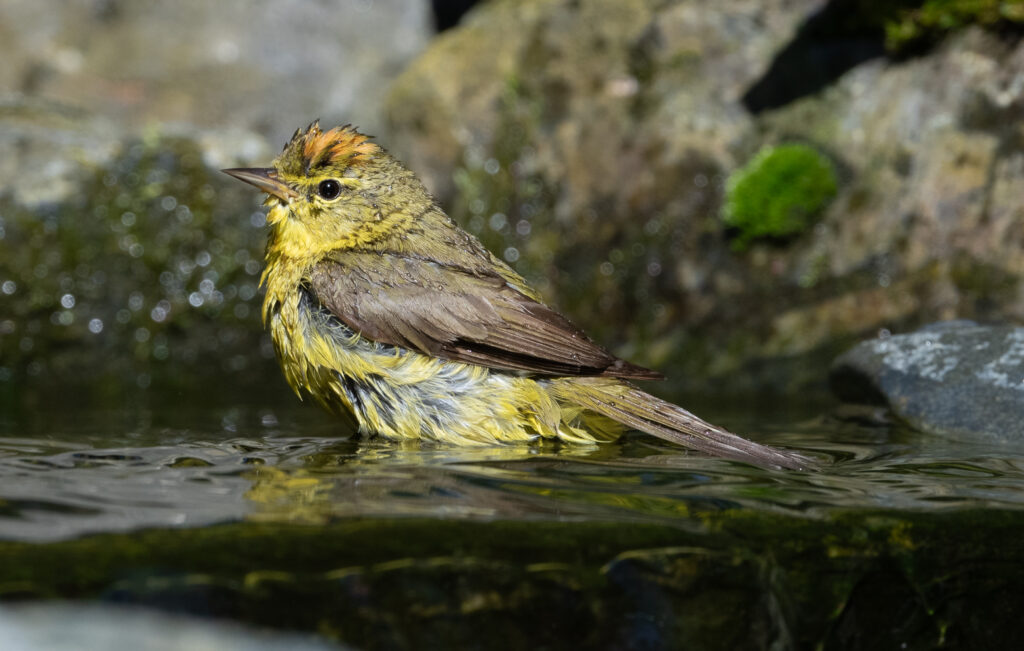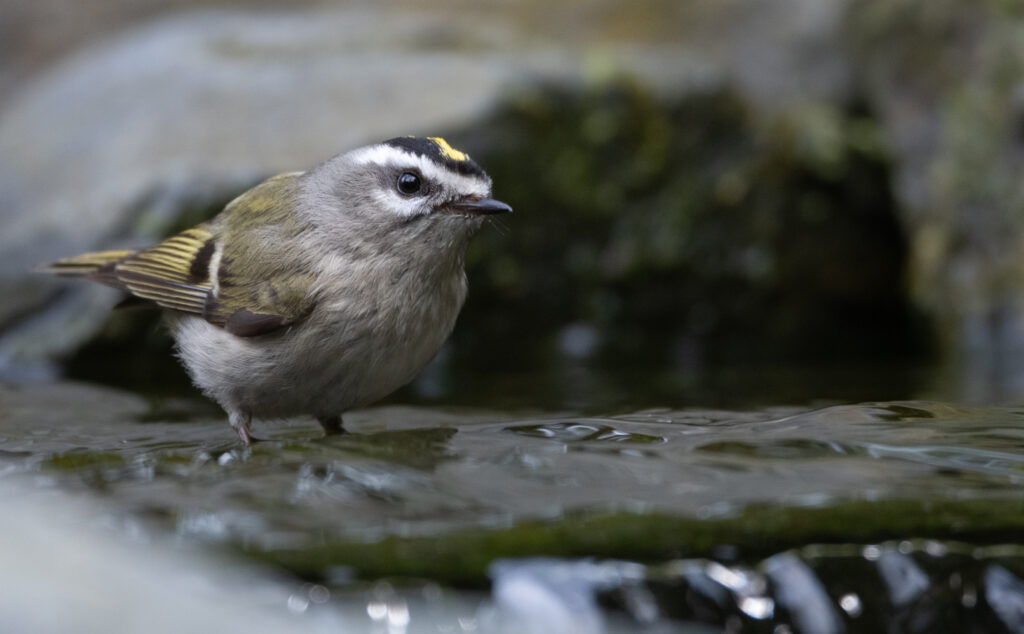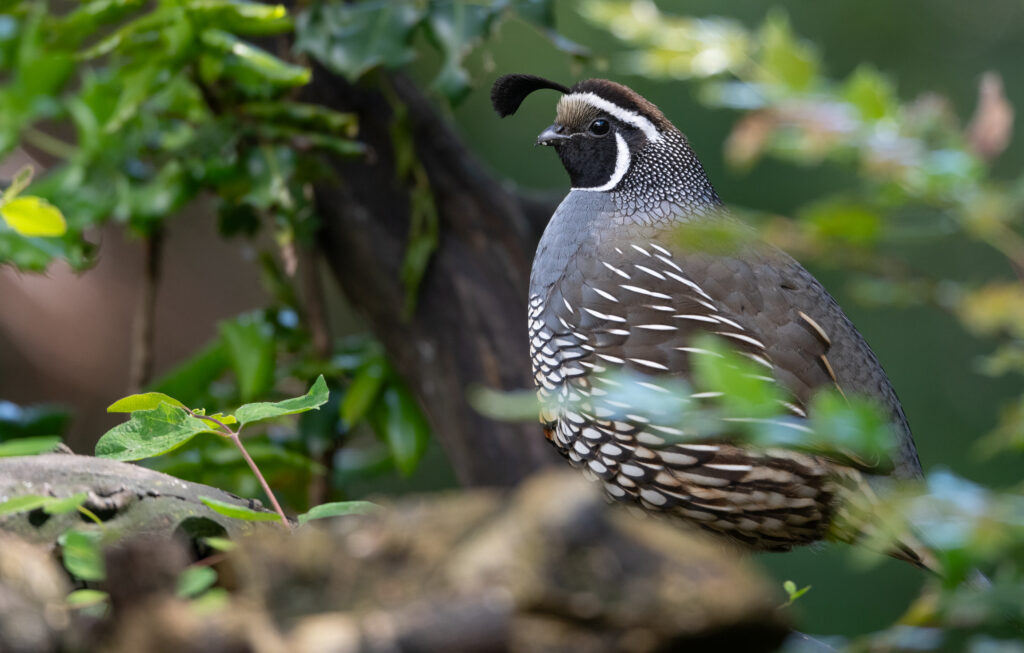On May 12, 2024, we had our first really warm day and about our fourth cloudless day in a row, complicating my birding photography. We were expecting the arrival of guests in the afternoon but I managed to spend some time in the yard during the late morning. I was encouraged by three sightings of a male Wilson’s warbler within a period of about 20-30 minutes but when no other migrants arrived I decided the sightings were probably of the same bird. And disappointingly, the bird never accessed a water feature and I was unable to obtain a photograph of it.
I managed another yard session late in the afternoon and was very surprised when a Warbling vireo landed on one of my staging sticks directly in front of me! This is a species that visits the yard only once every few years! My motion in attempting to swivel my camera in its direction frightened the bird and it flew without me being able to obtain a photo! I was zero for two on the day for migrants!
I was able to obtain photos of a Golden-crowned kinglet repeatedly accessing one of our water features.
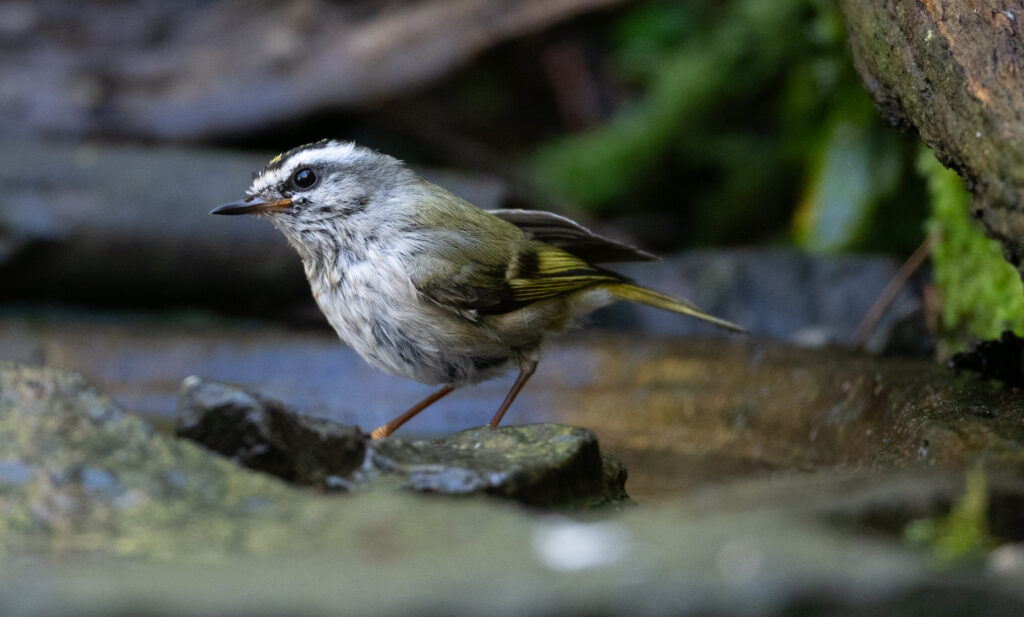
And while I’m on the subject of golden crowns, I was astounded when a Golden-crowned sparrow appeared in the yard. I thought that our last of about a dozen had left about a week before, but we clearly had a lingerer!
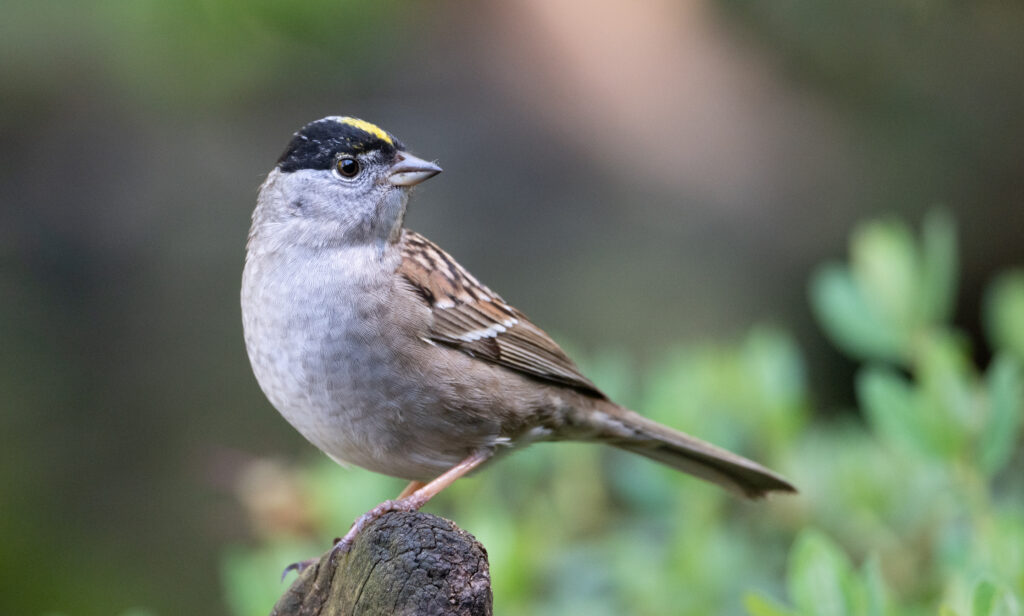
One of my most interesting observations during this and the previous day was the sighting of one of the small Pacific Tree frogs that has made its home among the rocks of our watercourse. The frog is slightly smaller than my thumbnail but is capable of emitting extremely loud vocalizations! I was able to photograph the frog as it inflated a sac under its chin and emitted loud croaks.
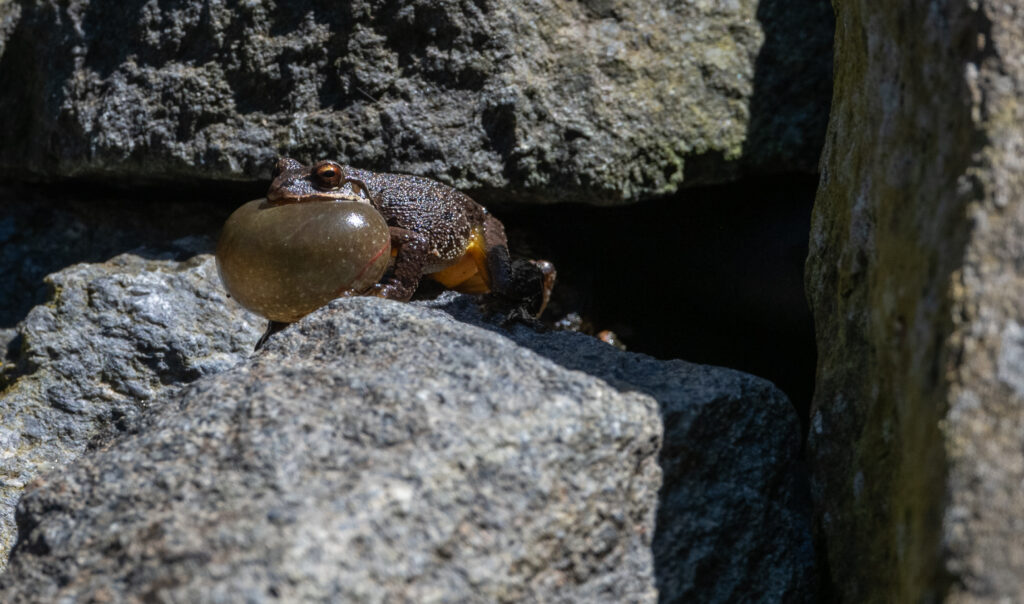
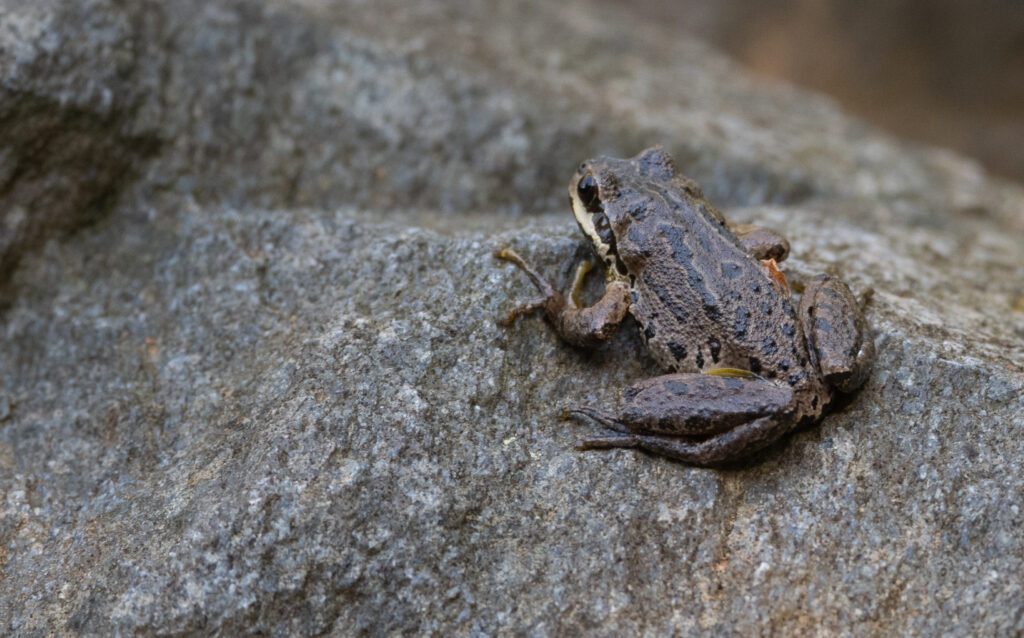
This afternoon I watched as one of the frogs laboriously hopped across open ground from our water course to a static water feature about five feet away. I watched through my telephoto lens as the frog made its journey, but the frog’s features didn’t look right. As it neared the second water feature I realized I was seeing one frog on top of another… I don’t think they were playing “leap frog”! I then watched as the frogs independently made their way back to the watercourse.
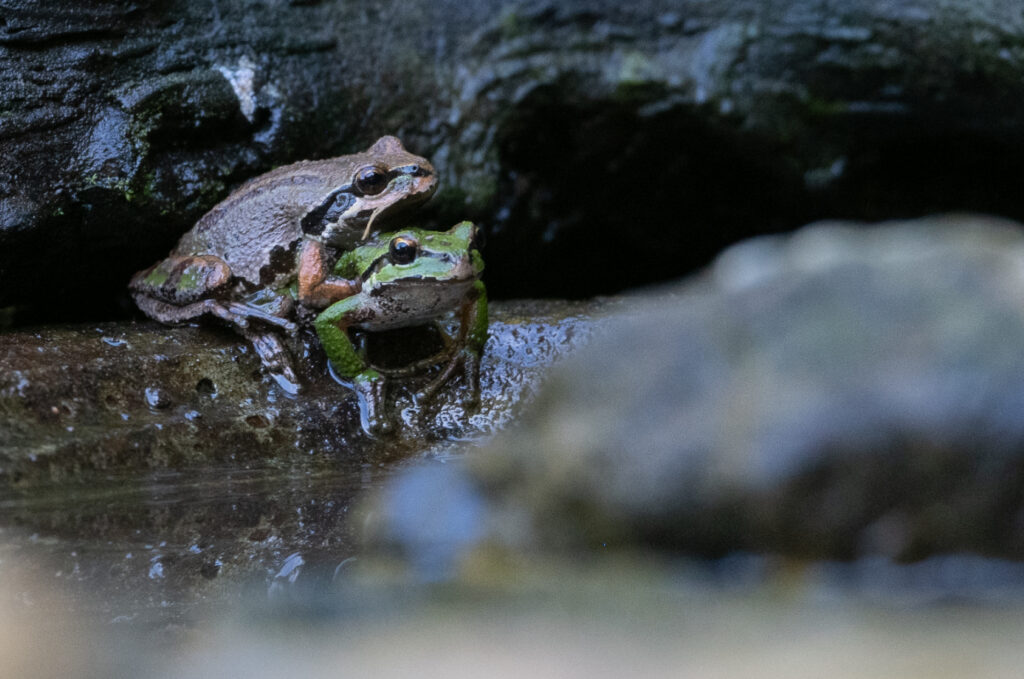
It had been an interesting day for observations but a disappointing day for photography.

